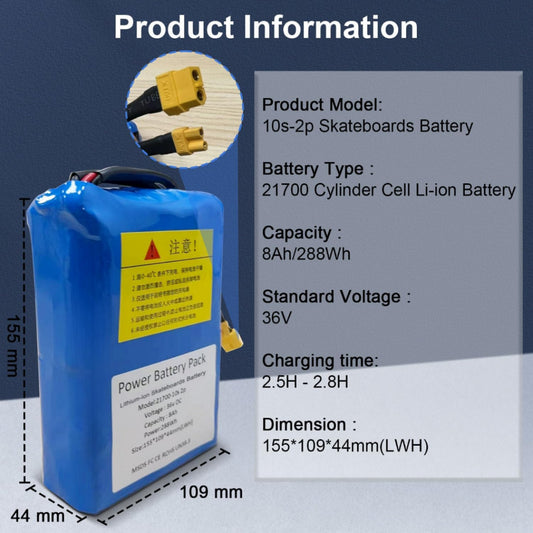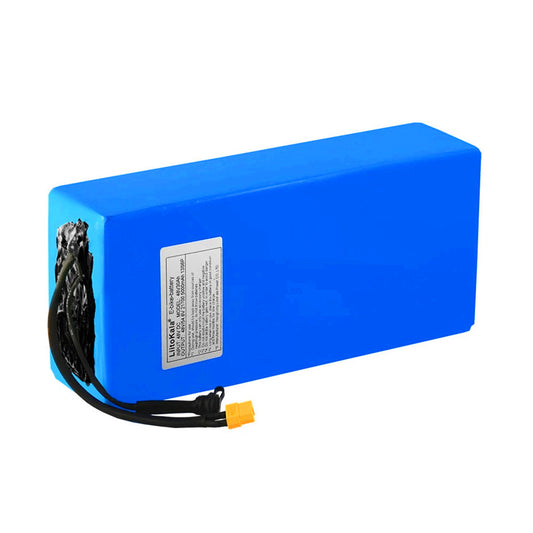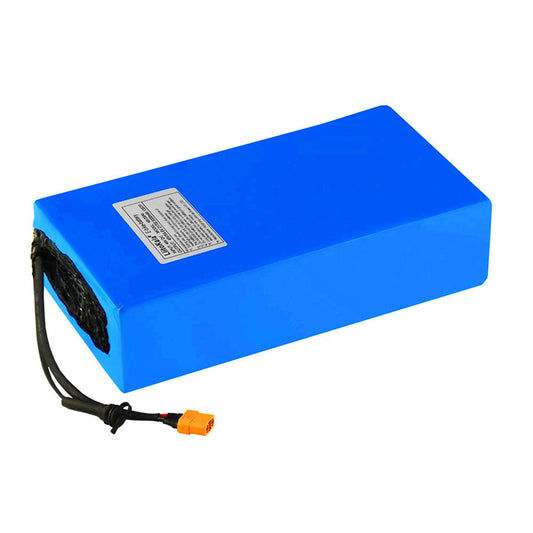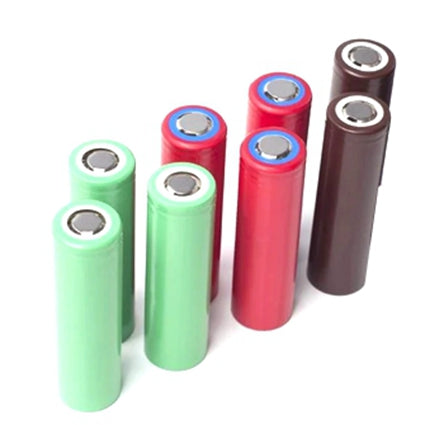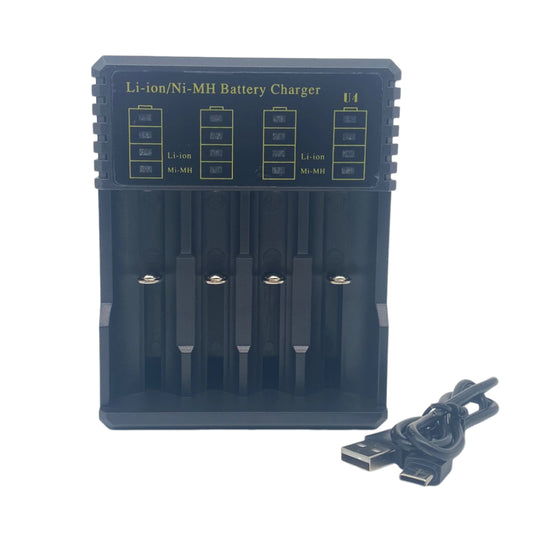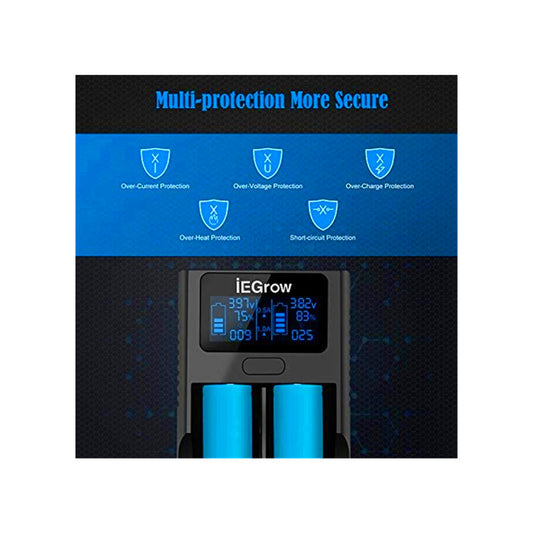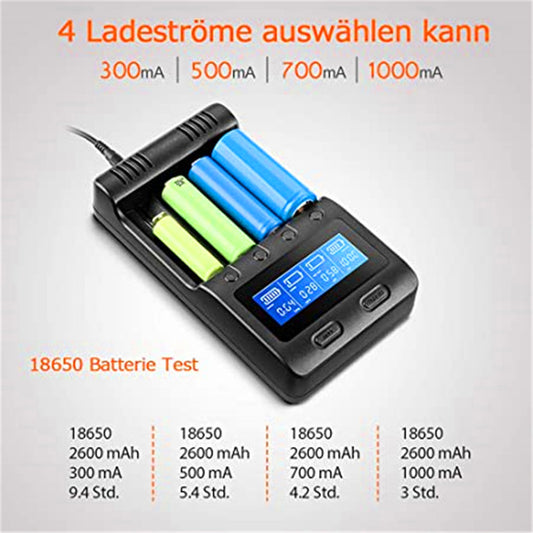The 18650 is ideal for high-drain devices, while AA batteries are versatile, low-cost options for everyday electronics. This article compares the 18650 and AA batteries, highlighting their different sizes, chemistries, and uses. It also addresses frequently asked questions about these batteries.
What is an 18650 battery?
The 18650 battery is a lithium-ion rechargeable cell, typically 18mm in diameter and 65mm in length, used in high-energy demand devices like laptops and e-bikes. It offers a higher voltage of 3.6 to 3.7 volts and a capacity ranging from 1800mAh to 3500mAh, providing extended usage times between charges due to its high energy density.

What is an AA battery?
AA batteries feature standard size and voltage
AA batteries are smaller, 14mm in diameter and 50mm in length, and can be either disposable or rechargeable due to their different type of chemistries such as alkaline (1.5 volts) and nickel-metal hydride (1.2 volts).
Depending on the type, capacities range from 700mAh to 3000mAh, making them suitable for low-power applications such as remote controls and toys. The popularity and compatibility of AA batteries make them ideal for everyday electronic devices.

What are the main types of AA batteries?
There are 4 main types of AA batteries, AA Lithium-ion, AA Zinc-carbon, AA Alkaline, and AA Nickel-based batteries. Here are their main differences:
| Battery Type | Capacity | Voltage | Energy | Energy Density (Wh/kg) | Charging Protection | Self-Discharge Rate |
| AA Lithium-ion | 600-3400 mAh | 3.6-3.7 V | 2.2-12.6 Wh | 250-300 | Yes (circuit required) | 2-3% per month |
| AA Zinc-carbon | 400-1700 mAh | 1.5 V | 0.6-2.55 Wh | 80-90 | No(Cannot be recharged) | typically low |
| AA Alkaline | 1700-3000 mAh | 1.5 V | 2.55-4.5 Wh | 100-120 | No | 2-3% per year |
| AA Nickel-based | 500-2800 mAh | 1.2 V | 0.6-3.36 Wh | 60-80 | Yes (depends on type) | 10-15% per month |
AA lithium-ion batteries have the highest capacity (600-3400 mAh), energy (2.2-12.6 Wh), and energy density (250-300 Wh/kg), making them ideal for high-power devices.
At the same time, AA lithium-ion and some AA nickel-based batteries are equipped with charge protection to prevent overcharging and over-discharging, increasing safety in use.
Which AA battery is better?
For everyday low to medium power needs, AA alkaline batteries provide consistent performance throughout the year with their high capacity and very low self-discharge rate (2-3% per year), making them a practical choice for non-rechargeable devices.
What is the difference between 18650 batteries and AA batteries?
Comparison in different dimensions
When buying a battery, we usually look at price, longevity, and whether or not it fits the device, here is a complete comparison of the main differences between 18650 and AA batteries:
| Battery Type | AA battery | 18650 Lithium-ion |
| Application | Wall clocks, wireless mice, digital cameras, alarm clocks, pacemakers in heart patients, watches, remote controls, and toys | Flashlights, power tools, power banks, electric vehicles, etc. |
| Size | Standard AA size, approximately 50.5mm in length and 14.5mm in diameter. | Larger than AA batteries, typically 65mm in length and 18mm in diameter. |
| Lifespan | Short when non-rechargeable and long when rechargeable hundreds of times. | Very long, rechargeable thousands of times. |
| Cost | Lower and Moderate when non-rechargeable, Higher when rechargeable. | Initially higher, but provides good long-term benefits, especially in high-power devices. |
| Voltage | 1.2-1.5V | 3.7V |
From the table above, we can see that AA batteries are suitable for everyday small electronic devices such as wall clocks and wireless mice, which are less costly, but disposable batteries have a short life, while rechargeable types can be reused and have a longer life.
In the meantime, 18650 lithium-ion batteries are mainly used for devices that require higher power, such as torches and power tools, which have a higher initial cost but are cost-effective in the long run as they can be recharged thousands of times.
Comparison of the environmental impact
-
Battery production
18650 Lithium-ion batteries are primarily made from lithium, cobalt, and other metals, which have environmental impacts due to the mining required to obtain them.
-
Rechargeability and life cycle
18650 lithium-ion batteries can withstand thousands of charge cycles, reducing replacement frequency and the number of discarded batteries.
-
Disposal and recycling
AA batteries also need to be disposed of properly to avoid leakage of harmful materials into the environment. Alkaline batteries are generally not recycled due to the lower value of the recyclable material, while NiMH AA batteries have a more established recycling process.
In summary, while both battery types have environmental impacts, the reusability and efficiency of 18650 lithium-ion batteries generally provide better long-term environmental protection compared to AA batteries.
Comparison of safety
18650 lithium-ion batteries are more likely to overheat, catch fire, or explode, however, some advanced manufacturers often use battery safety valve technology to prevent overcharging, overheating, and battery explosion.
In contrast, AA batteries are generally stable under normal usage conditions. However, if damaged or improperly stored, alkaline batteries may leak potassium hydroxide, which is corrosive but not flammable.
In summary, although the risk of serious accidents with AA batteries is low, there is still a risk of chemical leakage, while the high-quality 18650 battery adopts advanced battery safety valve technology to effectively protect users.
18650 battery vs AA, which is better?
Compared to AA batteries, 18650 lithium-ion batteries offer advantages in high energy density and high power devices such as power tools, high-drain flashlights, laptops, and e-bikes.
In addition, high-quality 18650 batteries are reusable and efficient and feature advanced battery safety valve technology, resulting in better long-term environmental performance and safety than AA batteries.
You can also visit KEEPBATT to explore our extensive range of batteries, including 18650 and AA batteries. As well as 21700 batteries, button cells, 21700 battery packs, and 18650 battery packs.
All our batteries are known for their superior performance and come with a quality assurance guarantee.
FAQs about 18650 and AA batteries
1. How many times can an 18650 battery be recharged?
The recharge cycle life of 18650 batteries varies by type and manufacturer. A 3.7V lithium-ion 18650 typically offers 500 to 1000 cycles, while proper charging habits—like avoiding full discharges, can extend this up to 1500 cycles. The 3.2V lithium 18650 can exceed 2000 cycles.
However, reductions in lifespan are common with inferior or counterfeit batteries, so it's important to use quality products.
2. How do you make AA batteries last longer?
To prolong the life of your AA batteries, always turn off your device when not in use and remove batteries when not in use for long periods to prevent discharge and corrosion.
For rechargeable batteries, use a suitable charger to avoid overcharging. Store batteries in a dry environment at room temperature, keep them dry and clean and avoid mixing old and new or different types of batteries to ensure optimum performance and longevity.
3. Can I charge an 18650 battery with an AA charger?
No, you should not charge an 18650 lithium-ion battery with a charger designed for AA batteries. Chargers for AA batteries, especially those for NiMH or alkaline batteries, are not compatible with the charging requirements of lithium-ion cells like the 18650.
Using the wrong charger can pose serious safety risks, including the potential for fire or explosion due to overcharging or improper voltage handling. Always use a charger specifically designed for 18650 lithium-ion batteries to ensure safe and effective charging.
4. Can I replace the AA battery with an 18650?
No, you should not replace AA batteries with 18650 batteries. The two types differ significantly in size, voltage, and capacity. AA batteries typically have a voltage of 1.5V (or 1.2V for rechargeable NiMH), while an 18650 lithium-ion battery usually provides a nominal voltage of 3.7V.
Additionally, the physical dimensions are different; the 18650 is both longer and wider than an AA battery. Using an 18650 in a device designed for AA batteries could lead to electrical malfunction, damage to the device, or safety hazards. Always use the battery type specified by the device manufacturer.
5. What is an 18650 battery pack?
An 18650 battery pack consists of multiple 18650 lithium-ion cells connected to provide higher voltage or capacity, commonly used in high-drain devices like laptops, power tools, and electric vehicles for enhanced performance and longer run times.
Related: 21700 Vs 18650 Battery
How Long Does a Ring Doorbell Battery Last?
Conclusion
When choosing between 18650 and AA batteries, you need to consider your power, safety, and environmental requirements. Although 18650 lithium-ion batteries have safety risks and environmental impacts, they can still meet high power requirements with more than 1000 recharge cycles.
For a safer, more environmentally friendly battery with less hazardous waste, consider AA batteries, especially rechargeable NiMH batteries.



